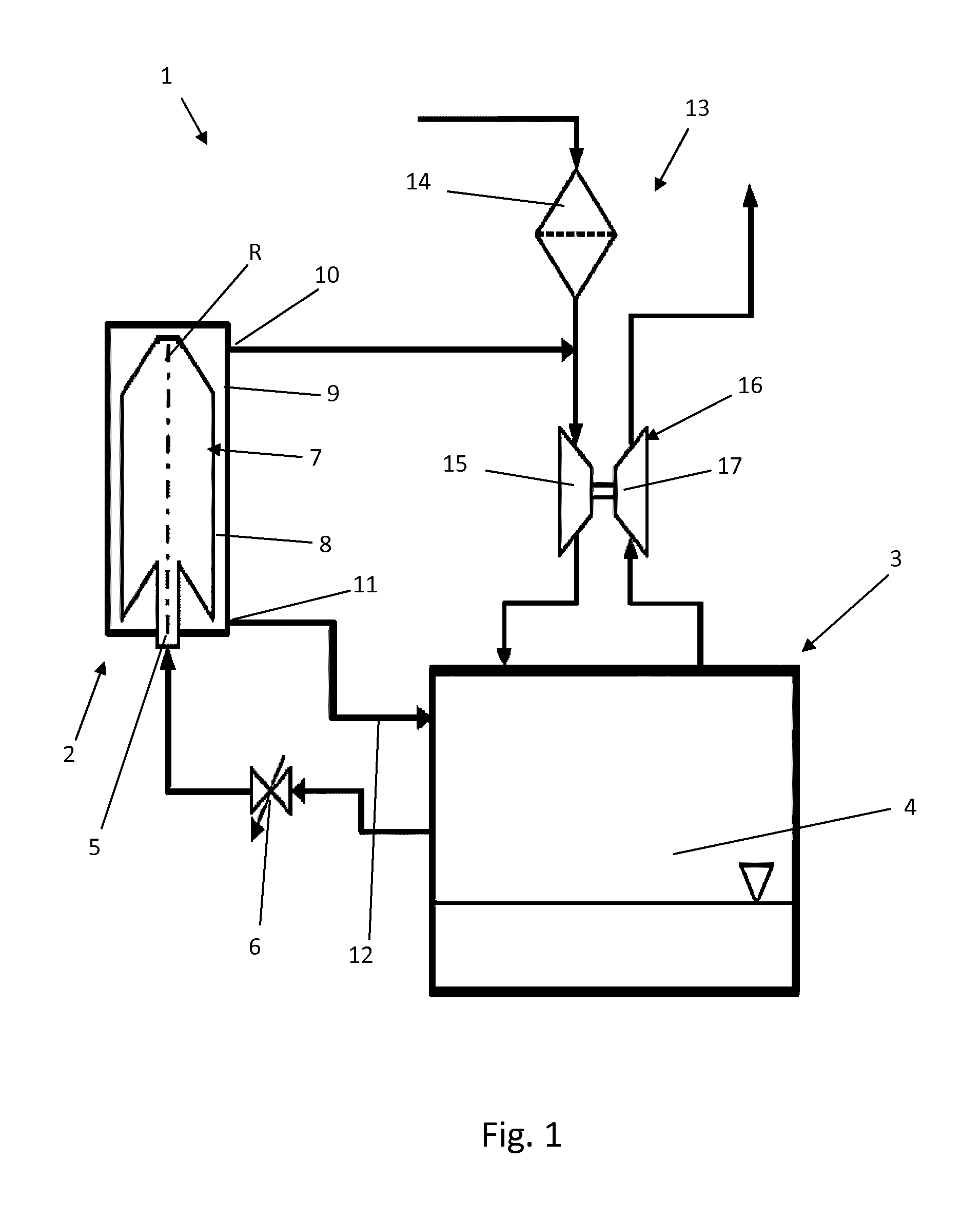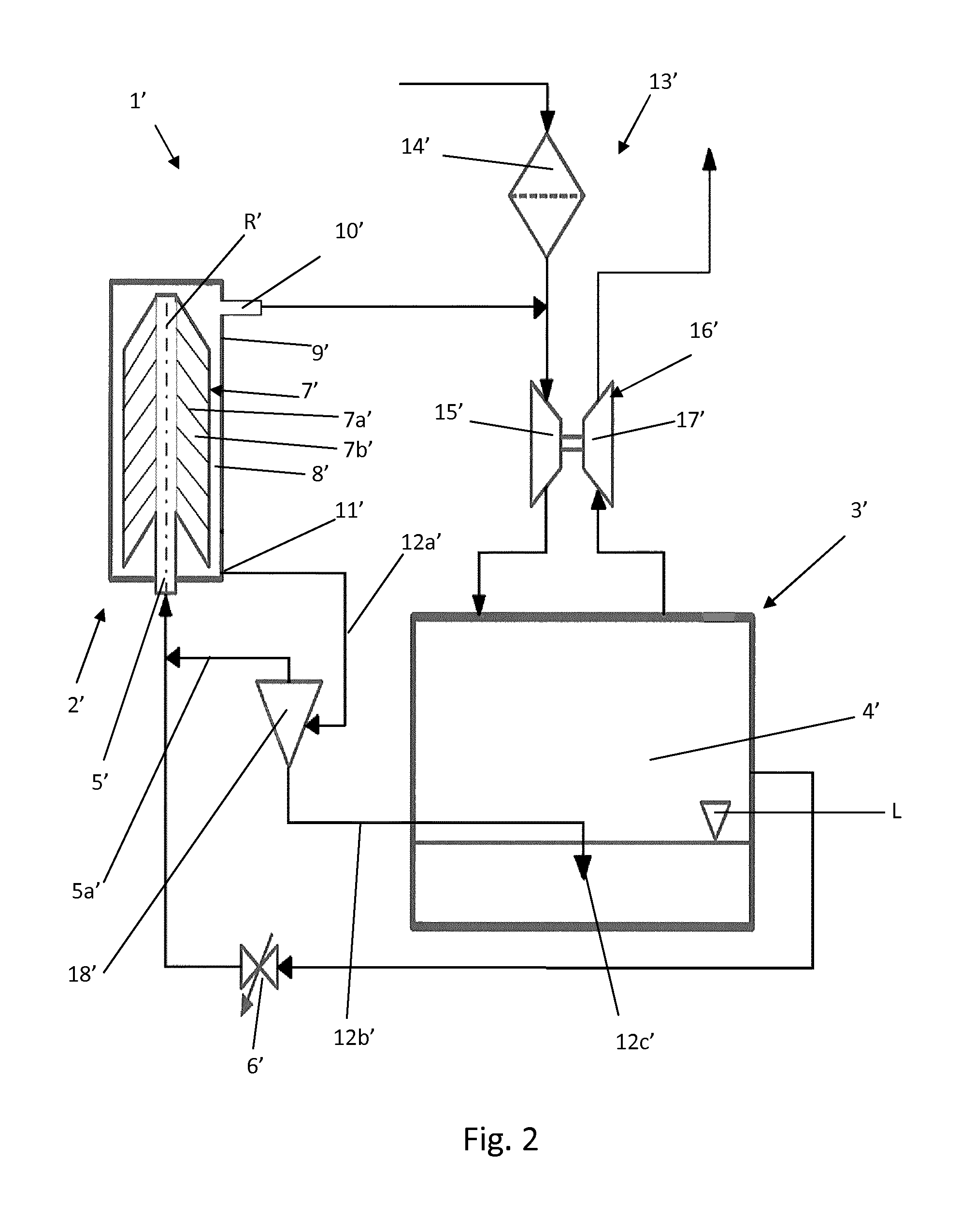Separating device, an internal combustion engine and centrifugal separator assembly and a method of separating contaminants from crankcase gas
a technology of centrifugal separator and separator assembly, which is applied in the direction of machines/engines, centrifuges, separation processes, etc., can solve the problems of unfavorable crankcase gas flow, and pressure in the separation space surrounding the centrifugal rotor becoming lower than the pressure in the crankcas
- Summary
- Abstract
- Description
- Claims
- Application Information
AI Technical Summary
Benefits of technology
Problems solved by technology
Method used
Image
Examples
Embodiment Construction
[0029]FIG. 1 shows an internal combustion engine and a centrifugal separator assembly 1. Hence, a centrifugal separator 2 is arranged to a combustion engine 3 having a crankcase 4 which is configured to ventilate contaminated crankcase gas through the centrifugal separator 2. As can be seen the crankcase 4 is connected to a gas inlet 5 of the centrifugal separator 2 via a regulating valve 6 which is arranged to maintain a desired gas pressure in the crankcase 4 during different running conditions for the combustion engine 3 (e.g. different load and speed conditions giving different blow-by flow rates).
[0030]The centrifugal separator 2 is arranged for separating contaminants in the form of oil mist and soot particles from the crankcase gas by means of a centrifugal rotor 7 with a plurality of separation discs (not shown). The centrifugal rotor 7 is arranged to rotate about a rotational axis R in a separation space 8 inside a rotor housing 9.
[0031]As can be seen the rotor housing 9 is...
PUM
| Property | Measurement | Unit |
|---|---|---|
| pressure | aaaaa | aaaaa |
| height | aaaaa | aaaaa |
| hydrostatic pressure | aaaaa | aaaaa |
Abstract
Description
Claims
Application Information
 Login to View More
Login to View More - R&D
- Intellectual Property
- Life Sciences
- Materials
- Tech Scout
- Unparalleled Data Quality
- Higher Quality Content
- 60% Fewer Hallucinations
Browse by: Latest US Patents, China's latest patents, Technical Efficacy Thesaurus, Application Domain, Technology Topic, Popular Technical Reports.
© 2025 PatSnap. All rights reserved.Legal|Privacy policy|Modern Slavery Act Transparency Statement|Sitemap|About US| Contact US: help@patsnap.com



